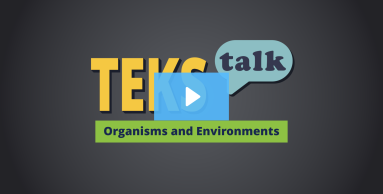
Knowledge and Skills Statement
Organisms and environments. The student knows how systems are organized and function to support the health of an organism and how trait are inherited.
Supporting Information
Research
Clary, Renee, and James Wandersee. "Creative Natural Selection." Science Scope 36, no. 2 (2012): 36–43.
http://www.jstor.org/stable/43184212
Summary: Natural selection is the topic of investigation in the article "Creative Natural Selection." Two main tasks are provided to have students investigate how the success of organisms is connected to how well they are adapted to their environment.
